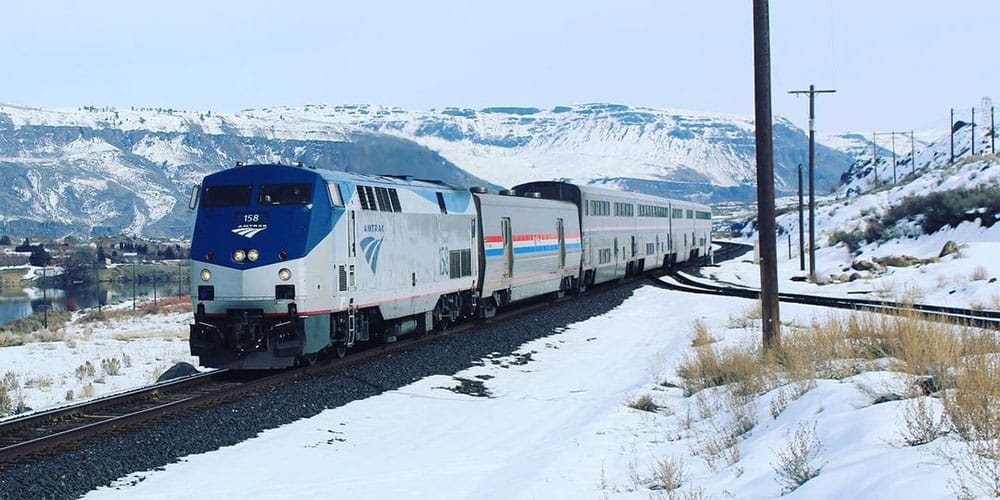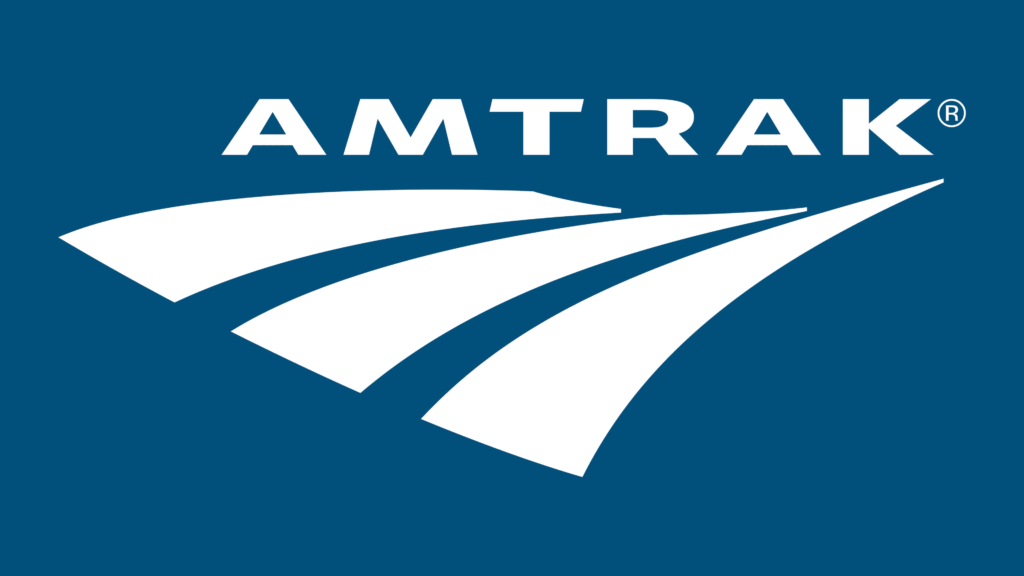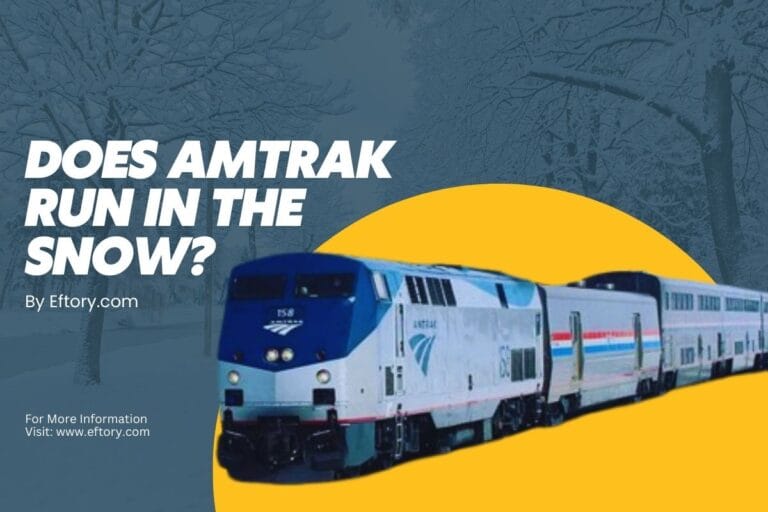In winters many travelers worry about how snow and icy conditions affect transportation. If you’re considering a train journey and wondering, “Does Amtrak run in the snow?” the short answer is yes! Amtrak trains are designed to operate in winter conditions which makes Amtrak a reliable choice when roads are covered in snow and flights are canceled. However, like any mode of transport, there are some factors to keep in mind when traveling by train during snowy weather.
How Amtrak Handles Snowy Conditions:
Unlike cars or planes, trains are generally less affected by snow. Amtrak has a system in place to keep its trains moving, even in harsh winter weather. The tracks are regularly cleared of snow, and locomotives are built to handle freezing temperatures. In most cases, Amtrak services run on schedule, even when a snowstorm hits.
Amtrak’s National Operations Center and Emergency Management personnel monitor weather conditions 24/7 and assess railroad and related infrastructure conditions in real time. If extreme winter weather conditions compel Amtrak to operate a modified schedule or cancel a trip, passengers are encouraged to check train status information through various channels, including the Amtrak website, app, or by calling 1-800-USA-RAIL.
Visit Amtrak.com and select the Train Status option in the menu or download the Amtrak app for the latest train status information.

What Routes Are Affected the Most?
Amtrak operates across the United States, including regions that experience heavy snowfall. Some of the routes that frequently deal with winter weather include:
- Empire Builder (Chicago to Seattle/Portland): This route crosses the northern U.S., where deep snow and frigid temperatures are common in winter.
- California Zephyr (Chicago to San Francisco): Traveling through the Rocky Mountains, this route offers beautiful winter scenery but can face occasional weather-related delays.
- Northeast Corridor (Washington D.C. to Boston): While this high-traffic route has advanced infrastructure, nor’easters can sometimes impact train schedules.
Even though these routes see frequent snowfall, Amtrak takes extra precautions to keep them running smoothly.
Also Read: Amtrak Schedules and Destinations

What to Expect When Traveling Amtrak in the Snow:
- Fewer Cancellations Compared to Flights:
Air travel is highly sensitive to snow and ice which causes frequent cancellations. Trains, on the other hand, can operate in conditions that would ground a plane. This makes Amtrak a reliable choice during winter. - Some Delays May Happen:
While Amtrak trains run in the snow, severe storms or heavy snowfall can cause slight delays. So must check Amtrak’s real-time status updates before your trip to stay informed. - A Cozy and Comfortable Ride:
One of the best things about train travel in the winter is the experience. You can sit back, stay warm, and watch snow-covered landscapes pass by without worrying about icy roads or airport chaos.
Advice for a Smooth Amtrak Trip in the Snow:
To ensure a hassle-free journey, consider these simple tips:
- Check the Weather: While Amtrak runs in snowy conditions, extreme weather may still cause minor disruptions.
- Dress Warmly: Even though Amtrak cars are heated, stations and platforms can be chilly.
- Pack Snacks and Essentials: Most trains have dining options, but carrying extra snacks, water, and a blanket can make your trip more comfortable.
- Stay Updated on Train Schedules: Use the Amtrak app or website to monitor real-time train status.
Frequently Asked Questions:
Do Amtrak trains get cold?
Amtrak trains are kept at a comfortable temperature year-round. Each railcar is climate-controlled, with heating systems in place for colder months. However, temperatures may vary slightly, so passengers sensitive to cold are advised to bring an extra layer.
Does Amtrak have free WiFi?
Yes, Amtrak offers free basic WiFi service on select trains and in certain stations across the United States. Including Acela, Northeast Regional, Amtrak Cascades, Pacific Surfliner, and other select routes. Many major stations offer WiFi access, such as Moynihan Train Hall in New York, Union Station in Washington, D.C., Union Station in Chicago, and 30th Street Station in Philadelphia.
Can I charge my phone on Amtrak?
Yes, you can charge your phone on Amtrak trains. Most Amtrak trains are equipped with standard 120-volt AC power outlets at or near each seat. In addition to AC outlets, some trains also offer USB charging ports.
What are you not allowed to bring on an Amtrak?
Amtrak has strict policies on prohibited items to ensure the safety and comfort of all passengers. Items not allowed on board include flammable materials such as fuels, fireworks, and other explosives. Weapons, including firearms and ammunition, are strictly prohibited. While service animals are permitted, pets and comfort animals are not allowed. Hoverboards, due to safety concerns, are also banned. Additionally, illegal substances, acid-containing batteries, and corrosive or dangerous chemicals cannot be brought onto Amtrak trains.
Final Thoughts:
Yes, Amtrak runs in the snow! Trains are one of the most reliable ways to travel in winter that offers comfort, safety, and stunning seasonal views. While delays can occasionally happen during extreme conditions, Amtrak does everything possible to keep trains running smoothly. If you’re planning a winter trip, Amtrak remains one of the best choices for hassle-free travel, even when the snow starts falling.






